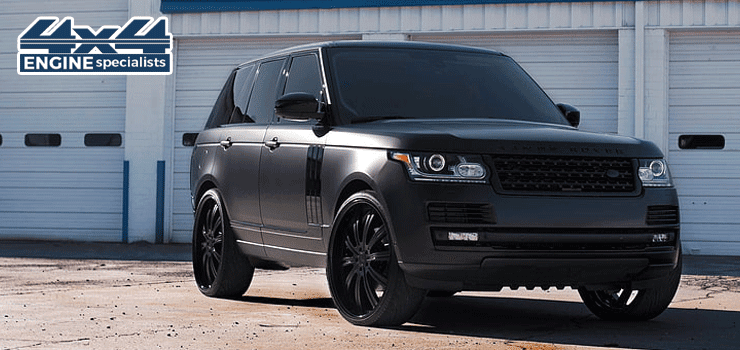The Range Rover 2.0 engine is known for its blend of performance, reliability, and versatility. However, car enthusiasts and owners often seek ways to modify this engine to unlock even greater power and efficiency. With advancements in engine technology, it is possible to enhance the performance of the Range Rover 2.0 engine while maintaining its core strengths. This article explores various ways the Range Rover 2.0 engine can be modified for better performance, considering factors such as engine replacement, reconditioned engines, and supply and fit options to ensure optimal results.
Upgrading the Exhaust System for Enhanced Power
One of the simplest and most effective modifications to improve the Range Rover 2.0 engine’s performance is upgrading the exhaust system. The stock exhaust system, while adequate, can restrict airflow and limit the engine’s ability to expel gases efficiently. By installing a performance exhaust, you can reduce backpressure, allowing the engine to breathe better, which leads to improved horsepower and torque.
A high-flow exhaust system not only boosts power but also enhances throttle response, making the vehicle feel more responsive during acceleration. This modification can also contribute to better fuel economy by improving engine efficiency. When opting for an exhaust upgrade, it’s important to ensure that it’s professionally installed with a reliable supply and fit service to avoid any compatibility issues.
Tuning the Engine for Increased Horsepower
Engine tuning is another popular modification that can significantly improve the performance of the Range Rover 2.0 engine. Tuning involves reprogramming the engine control unit (ECU) to optimize fuel delivery, ignition timing, and boost pressure for enhanced power output. A tuned engine can deliver noticeable increases in horsepower and torque, transforming the vehicle’s overall driving experience.
There are various tuning options available, from simple ECU re-flashing to more advanced custom tunes tailored to your specific driving preferences. Many tuning services also offer “performance chips” that plug into the ECU to alter engine parameters. Whether you choose a reconditioned engine that’s already been tuned or opt to tune the existing one, it’s crucial to work with an expert who understands the intricacies of the Range Rover 2.0 engine for a successful outcome.
Installing a Turbocharger or Supercharger
For those looking to dramatically boost the performance of the Range Rover 2.0 engine, adding forced induction in the form of a turbocharger or supercharger is an excellent option. A turbocharger compresses the air entering the engine, allowing it to burn more fuel and generate more power. A supercharger, on the other hand, achieves similar results but is driven directly by the engine, offering instant boost without any lag.
Turbocharging or supercharging can provide significant increases in horsepower, sometimes by 30% or more, depending on the setup. This modification is more complex and requires specialized parts, as well as an expert supply and fit service. It’s also recommended to upgrade other components, such as the fuel system and cooling system, to handle the increased power and ensure the engine’s longevity.
Improving Air Intake for Better Engine Breathing
A performance air intake system is another effective modification that can improve the Range Rover 2.0 engine’s performance. The stock air intake system is designed for efficiency, but it can restrict the amount of air that reaches the engine, limiting its potential. A cold air intake or performance intake system replaces the factory setup with a less restrictive design, allowing more air to flow into the engine.
This increase in airflow improves combustion efficiency, resulting in better throttle response, increased horsepower, and improved fuel economy. Cold air intakes are particularly beneficial because they draw cooler, denser air into the engine, which burns more efficiently than warmer air. As with any performance modification, it’s important to ensure proper installation through a trusted supply and fit service.
Upgrading the Fuel System for Consistent Power Delivery
Modifying the Range Rover 2.0 engine for higher performance often requires an upgrade to the fuel system to ensure consistent power delivery. The stock fuel system is designed to meet the needs of the factory engine output, but as modifications increase power demands, it may become insufficient. Upgrading fuel injectors, fuel pumps, and even the fuel lines can help maintain the proper flow of fuel to the engine.
High-performance fuel injectors ensure that the engine receives the precise amount of fuel needed for optimal combustion, especially at higher RPMs. Likewise, a high-flow fuel pump can maintain the required pressure and flow rate under demanding conditions. These modifications ensure that the engine delivers consistent power, even when heavily modified. Supply and fit services can handle these upgrades to ensure compatibility and optimal performance.
Reconditioning the Engine for Performance Gains
For owners seeking to extend the life of their Range Rover 2.0 engine while improving performance, reconditioning is a viable option. A reconditioned engine involves stripping down the engine, replacing worn-out parts, and reassembling it to factory or better specifications. Reconditioning can address performance issues related to age or wear, and even allow for performance upgrades during the process.
Choosing a reconditioned engine with upgraded components such as performance pistons, camshafts, or crankshafts can boost overall power output. Reconditioned engines offer the reliability of a factory-fresh engine with the potential for enhanced performance, especially when combined with tuning or other modifications. It’s essential to source reconditioned engines from reputable suppliers to ensure quality and long-term reliability.
Upgrading the Suspension for Better Handling
While not directly related to engine performance, upgrading the suspension can significantly improve the overall driving dynamics of a modified Range Rover 2.0. A stiffer, more responsive suspension system allows the vehicle to handle the increased power from engine modifications more effectively. Performance suspension components, such as upgraded shocks, springs, and sway bars, can reduce body roll, improve cornering, and provide better overall control.


